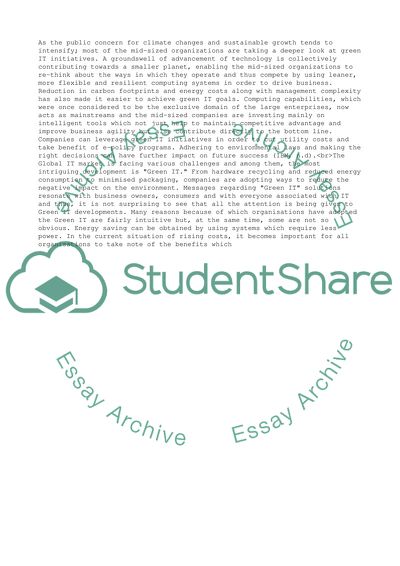Cite this document
(How organisation adopting Green it Coursework Example | Topics and Well Written Essays - 3000 words, n.d.)
How organisation adopting Green it Coursework Example | Topics and Well Written Essays - 3000 words. https://studentshare.org/information-technology/1794887-how-organisation-adopting-green-it
How organisation adopting Green it Coursework Example | Topics and Well Written Essays - 3000 words. https://studentshare.org/information-technology/1794887-how-organisation-adopting-green-it
(How Organisation Adopting Green It Coursework Example | Topics and Well Written Essays - 3000 Words)
How Organisation Adopting Green It Coursework Example | Topics and Well Written Essays - 3000 Words. https://studentshare.org/information-technology/1794887-how-organisation-adopting-green-it.
How Organisation Adopting Green It Coursework Example | Topics and Well Written Essays - 3000 Words. https://studentshare.org/information-technology/1794887-how-organisation-adopting-green-it.
“How Organisation Adopting Green It Coursework Example | Topics and Well Written Essays - 3000 Words”. https://studentshare.org/information-technology/1794887-how-organisation-adopting-green-it.


